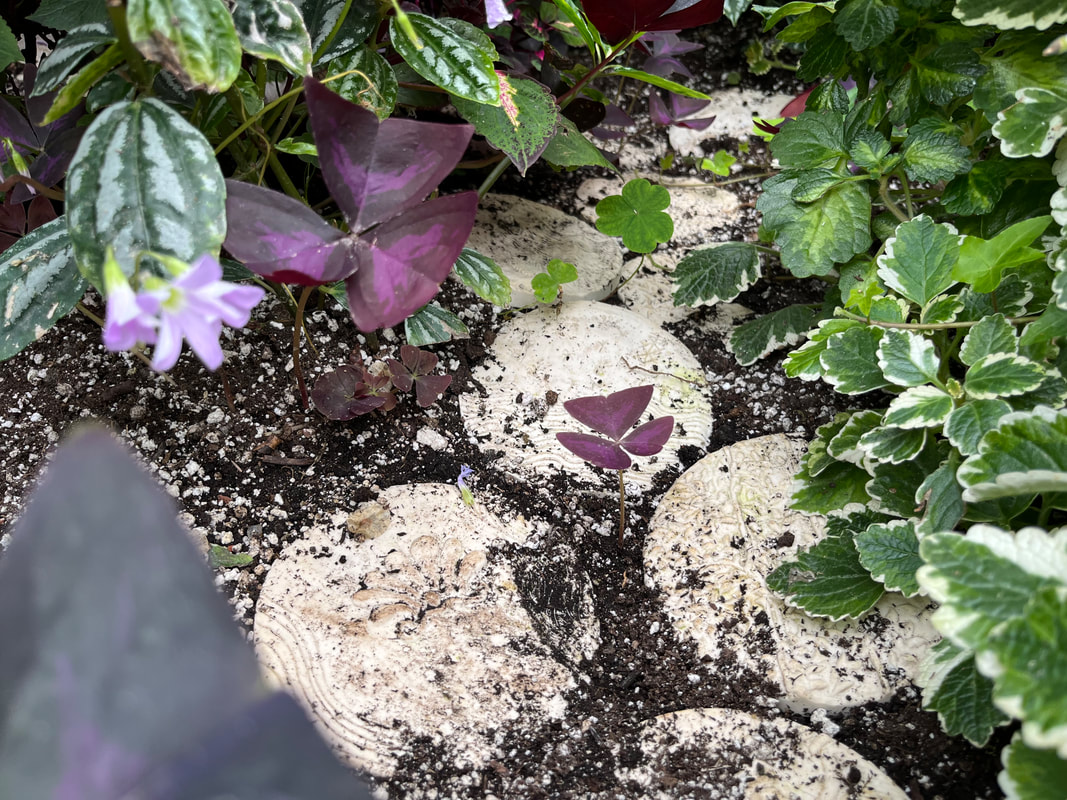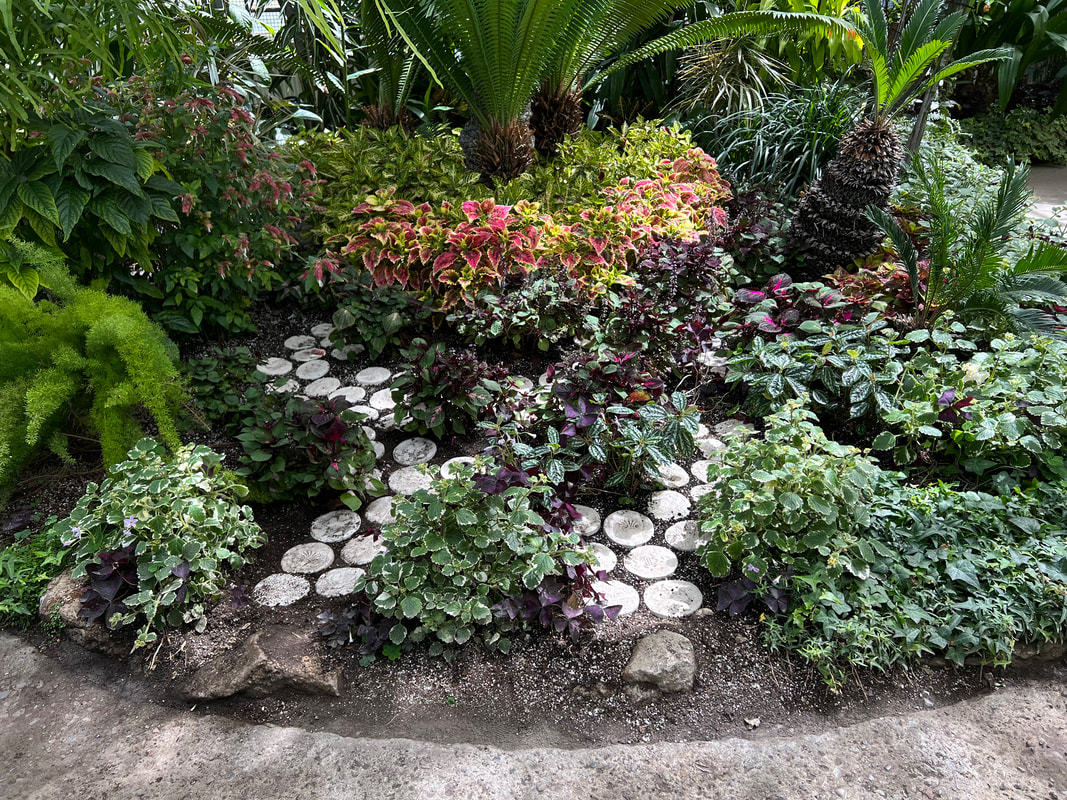Botanical garden collections were common in ancient Mesopotamian civilisations. The earliest of which was recorded between 1114-1076 b.c.e, established by the Assyrian king Tiglath-Pileser I. Continuing this tradition, in 8th century b.c.e, Ashurnasirpal II built a palace in Nineveh (modern day Mosul, northern Iraq), housing wall reliefs illustrating plants in his own gardens — including ones present here, in the contemporary setting of Allan Gardens, in Tkaronto: “Where The Trees Meet The Water”. Some of the same trees planted here in the gardens were depicted in ancient Assyria including date palms, cedar, cypress, olive, fir, and fig.
displaced plants with shallow roots, cared for by unfamiliar hands
uprooted and replanted, growing half-heartedly
in fertile soil
آثار حدائق | athaar hada’iq [garden trails],
2024. approx. 10 cm each x 78 Hydrostone tiles.
Installed at Allan Gardens in "Toronto, Ontario", and selection of tile details.
As part of the exhibition "As we move away from the sun" curated by Fatma Hendawy, hosted by apexart.
With sincere gratitude to the original stewards of the lands where this work was exhibited, including the Mississaugas of the Credit, the Anishnabeg, the Chippewa, the Haudenosaunee and the Wendat peoples.
The research and production of this work was supported by Canada Council for the Arts.
2024. approx. 10 cm each x 78 Hydrostone tiles.
Installed at Allan Gardens in "Toronto, Ontario", and selection of tile details.
As part of the exhibition "As we move away from the sun" curated by Fatma Hendawy, hosted by apexart.
With sincere gratitude to the original stewards of the lands where this work was exhibited, including the Mississaugas of the Credit, the Anishnabeg, the Chippewa, the Haudenosaunee and the Wendat peoples.
The research and production of this work was supported by Canada Council for the Arts.





